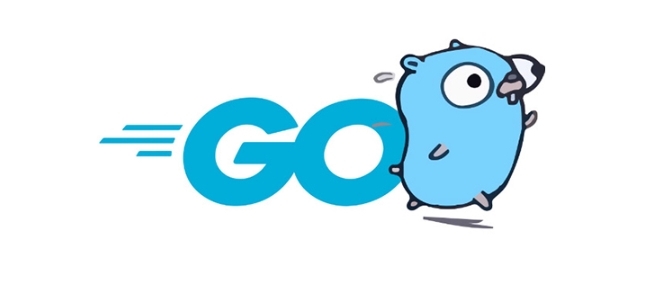To update Go language dependencies to the latest version, you can use the following methods: 1. Use go get -u to upgrade a single dependency; 2. Use go get -u all to upgrade all compatible versions in batches; 3. Manually modify the go.mod file to specify a specific version. First, make sure to understand the dependency name and version of the required update. If you only need to update a single package, just execute go get -u and the package name; if you want to get the latest submission without tags, you can use the @latest parameter; if you need to batch update all dependencies to the latest compatible version, run the go get -u all command; if you know the target version, you can directly edit the version number in go.mod and run the go mod download or build command. Note: After upgrading, it is recommended to run go mod tidy to clean up the dependencies and verify whether the function is normal through tests; when encountering dependency conflicts, go mod graph can be used to analyze it; domestic users should configure GOPROXY to ensure smooth download.

It is not complicated to update a Go language that depends on the latest version, but there are several key points that need to be paid attention to. Go's module system is already relatively mature. As long as you are familiar with the operations of the go.mod file and related commands, update dependencies can be basically completed easily.

Use the go get command to upgrade a single dependency
The most direct way is to use the go get command plus the -u parameter to upgrade a certain dependency. For example, if you want to upgrade github.com/some/package to the latest version, you can run:

go get -u github.com/some/package
If you also want to upgrade to the latest commit of the main branch (such as a version that has not released a tag), you can use @latest to force the latest commit:
go get github.com/some/package@latest
This approach is suitable for situations where you only want to update a specific dependency. Note: Sometimes you may need to run go mod tidy after upgrading to clean up unnecessary dependencies or complete missing dependencies.

Batch upgrades all dependencies to the latest compatible version
If you want to upgrade all dependencies in your project to the "latest compatible version" that the current Go module considers, you can use the following command:
go get -u all
This command checks all packages that the current module depends on and tries to upgrade them to the latest version that is compatible with your Go version and other constraints in go.mod. This is very useful when you maintain a long-term project and want to keep your dependencies new.
However, it should be noted that this batch upgrade may introduce some behavior changes, especially minor version upgrades may bring some unexpected changes. It is recommended to cooperate with the test.
Modify the go.mod file to manually specify the version and then synchronize it
Sometimes you may already know which version you want to upgrade to, or you have obtained a specific version number from the documentation or someone else's recommendation. At this time, you can directly open the go.mod file, find the corresponding require line, and manually modify the version number.
For example, it was originally:
github.com/some/package v1.2.3
You can change it to:
github.com/some/package v1.2.5
After saving, run:
go mod download
Or run the build command directly, and Go will automatically download the new version. This method is suitable for situations where you have a clear target version and don't want the command to automatically select the version number.
Notes and FAQs
- Dependency conflict : Sometimes multiple dependencies require different versions of the same module, Go will automatically select the highest version that meets all needs. If there is a problem, you can use
go mod graphto view the dependency graph. - Proxy settings : If you cannot access certain modules in China, you can set GOPROXY, for example, use
GOPROXY=https://goproxy.io,direct. - Test verification : After upgrading the dependency, it is best to run the test to ensure that the new version does not destroy the existing features.
Basically these are the methods. The operation is not complicated, but some details are easy to ignore, such as version compatibility and proxy configuration. If you are not careful, you may get stuck. As long as you take it step by step, it will be done smoothly in most cases.
The above is the detailed content of How to update a golang dependency to the latest version. For more information, please follow other related articles on the PHP Chinese website!

Hot AI Tools

Undress AI Tool
Undress images for free

Undresser.AI Undress
AI-powered app for creating realistic nude photos

AI Clothes Remover
Online AI tool for removing clothes from photos.

Clothoff.io
AI clothes remover

Video Face Swap
Swap faces in any video effortlessly with our completely free AI face swap tool!

Hot Article

Hot Tools

Notepad++7.3.1
Easy-to-use and free code editor

SublimeText3 Chinese version
Chinese version, very easy to use

Zend Studio 13.0.1
Powerful PHP integrated development environment

Dreamweaver CS6
Visual web development tools

SublimeText3 Mac version
God-level code editing software (SublimeText3)

Hot Topics
 What are the implications of Go's static linking by default?
Jun 19, 2025 am 01:08 AM
What are the implications of Go's static linking by default?
Jun 19, 2025 am 01:08 AM
Go compiles the program into a standalone binary by default, the main reason is static linking. 1. Simpler deployment: no additional installation of dependency libraries, can be run directly across Linux distributions; 2. Larger binary size: Including all dependencies causes file size to increase, but can be optimized through building flags or compression tools; 3. Higher predictability and security: avoid risks brought about by changes in external library versions and enhance stability; 4. Limited operation flexibility: cannot hot update of shared libraries, and recompile and deployment are required to fix dependency vulnerabilities. These features make Go suitable for CLI tools, microservices and other scenarios, but trade-offs are needed in environments where storage is restricted or relies on centralized management.
 How do I create a buffered channel in Go? (e.g., make(chan int, 10))
Jun 20, 2025 am 01:07 AM
How do I create a buffered channel in Go? (e.g., make(chan int, 10))
Jun 20, 2025 am 01:07 AM
To create a buffer channel in Go, just specify the capacity parameters in the make function. The buffer channel allows the sending operation to temporarily store data when there is no receiver, as long as the specified capacity is not exceeded. For example, ch:=make(chanint,10) creates a buffer channel that can store up to 10 integer values; unlike unbuffered channels, data will not be blocked immediately when sending, but the data will be temporarily stored in the buffer until it is taken away by the receiver; when using it, please note: 1. The capacity setting should be reasonable to avoid memory waste or frequent blocking; 2. The buffer needs to prevent memory problems from being accumulated indefinitely in the buffer; 3. The signal can be passed by the chanstruct{} type to save resources; common scenarios include controlling the number of concurrency, producer-consumer models and differentiation
 How does Go ensure memory safety without manual memory management like in C?
Jun 19, 2025 am 01:11 AM
How does Go ensure memory safety without manual memory management like in C?
Jun 19, 2025 am 01:11 AM
Goensuresmemorysafetywithoutmanualmanagementthroughautomaticgarbagecollection,nopointerarithmetic,safeconcurrency,andruntimechecks.First,Go’sgarbagecollectorautomaticallyreclaimsunusedmemory,preventingleaksanddanglingpointers.Second,itdisallowspointe
 How can you use Go for system programming tasks?
Jun 19, 2025 am 01:10 AM
How can you use Go for system programming tasks?
Jun 19, 2025 am 01:10 AM
Go is ideal for system programming because it combines the performance of compiled languages ??such as C with the ease of use and security of modern languages. 1. In terms of file and directory operations, Go's os package supports creation, deletion, renaming and checking whether files and directories exist. Use os.ReadFile to read the entire file in one line of code, which is suitable for writing backup scripts or log processing tools; 2. In terms of process management, the exec.Command function of the os/exec package can execute external commands, capture output, set environment variables, redirect input and output flows, and control process life cycles, which are suitable for automation tools and deployment scripts; 3. In terms of network and concurrency, the net package supports TCP/UDP programming, DNS query and original sets.
 How do I call a method on a struct instance in Go?
Jun 24, 2025 pm 03:17 PM
How do I call a method on a struct instance in Go?
Jun 24, 2025 pm 03:17 PM
In Go language, calling a structure method requires first defining the structure and the method that binds the receiver, and accessing it using a point number. After defining the structure Rectangle, the method can be declared through the value receiver or the pointer receiver; 1. Use the value receiver such as func(rRectangle)Area()int and directly call it through rect.Area(); 2. If you need to modify the structure, use the pointer receiver such as func(r*Rectangle)SetWidth(...), and Go will automatically handle the conversion of pointers and values; 3. When embedding the structure, the method of embedded structure will be improved, and it can be called directly through the outer structure; 4. Go does not need to force use getter/setter,
 What are interfaces in Go, and how do I define them?
Jun 22, 2025 pm 03:41 PM
What are interfaces in Go, and how do I define them?
Jun 22, 2025 pm 03:41 PM
In Go, an interface is a type that defines behavior without specifying implementation. An interface consists of method signatures, and any type that implements these methods automatically satisfy the interface. For example, if you define a Speaker interface that contains the Speak() method, all types that implement the method can be considered Speaker. Interfaces are suitable for writing common functions, abstract implementation details, and using mock objects in testing. Defining an interface uses the interface keyword and lists method signatures, without explicitly declaring the type to implement the interface. Common use cases include logs, formatting, abstractions of different databases or services, and notification systems. For example, both Dog and Robot types can implement Speak methods and pass them to the same Anno
 How do I use string functions from the strings package in Go? (e.g., len(), strings.Contains(), strings.Index(), strings.ReplaceAll())
Jun 20, 2025 am 01:06 AM
How do I use string functions from the strings package in Go? (e.g., len(), strings.Contains(), strings.Index(), strings.ReplaceAll())
Jun 20, 2025 am 01:06 AM
In Go language, string operations are mainly implemented through strings package and built-in functions. 1.strings.Contains() is used to determine whether a string contains a substring and returns a Boolean value; 2.strings.Index() can find the location where the substring appears for the first time, and if it does not exist, it returns -1; 3.strings.ReplaceAll() can replace all matching substrings, and can also control the number of replacements through strings.Replace(); 4.len() function is used to obtain the length of the bytes of the string, but when processing Unicode, you need to pay attention to the difference between characters and bytes. These functions are often used in scenarios such as data filtering, text parsing, and string processing.
 How do I use the io package to work with input and output streams in Go?
Jun 20, 2025 am 11:25 AM
How do I use the io package to work with input and output streams in Go?
Jun 20, 2025 am 11:25 AM
TheGoiopackageprovidesinterfaceslikeReaderandWritertohandleI/Ooperationsuniformlyacrosssources.1.io.Reader'sReadmethodenablesreadingfromvarioussourcessuchasfilesorHTTPresponses.2.io.Writer'sWritemethodfacilitateswritingtodestinationslikestandardoutpu






